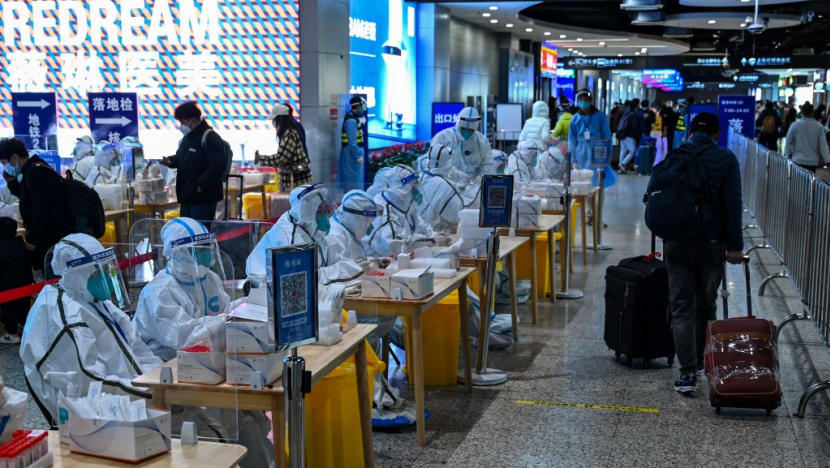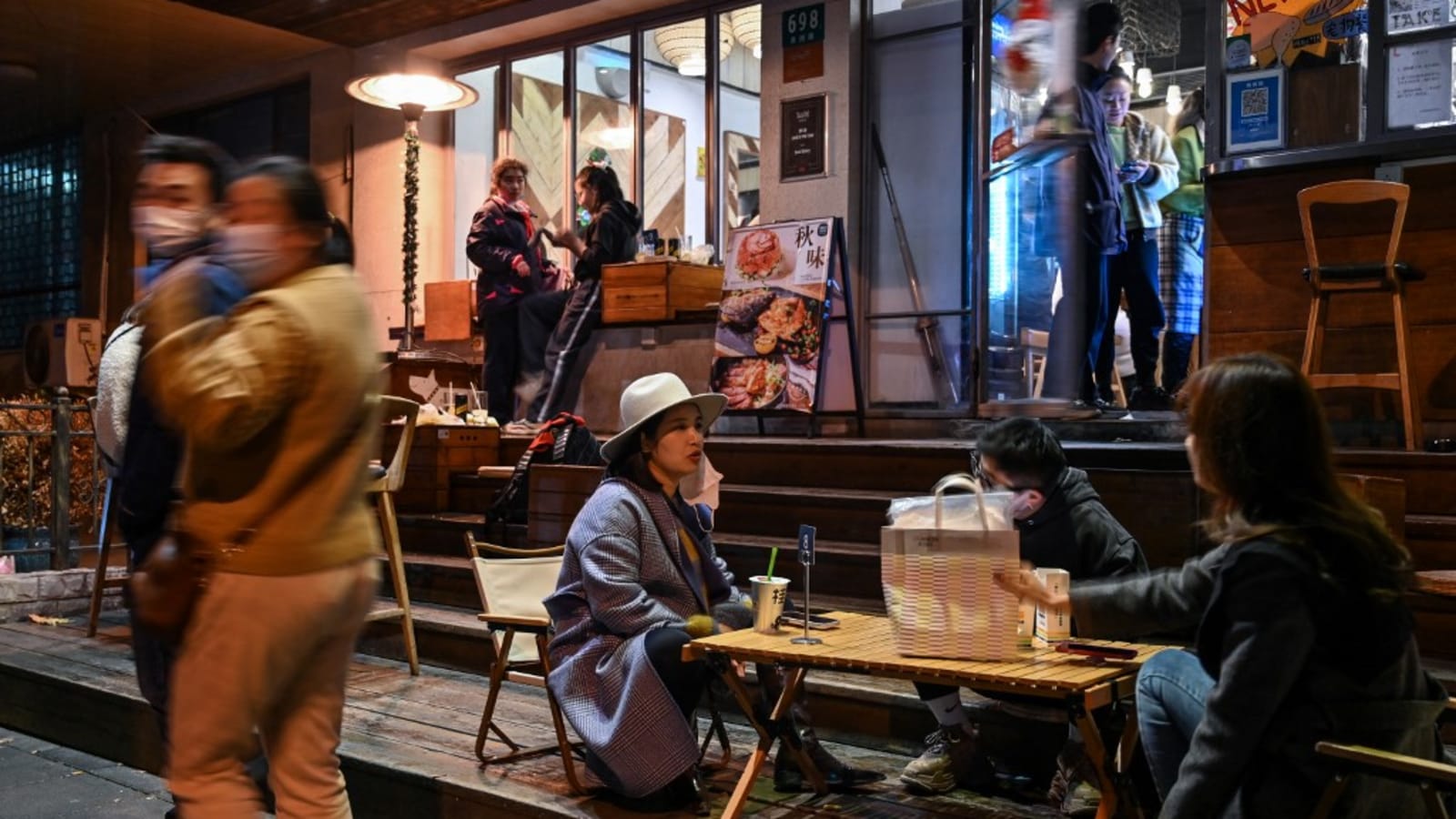BEIJING: China rolled back its tough COVID-19 rules on Wednesday (Dec 7), after the restrictions sparked popular unrest and hammered the world’s second-largest economy.
Here are some of the major changes announced by Beijing’s National Health Commission, as well as reactions to the shift in policy and what it means for a further reopening.
HOME QUARANTINE
People infected with COVID-19 but with mild or no symptoms can now isolate at home rather than in state-managed facilities.
This is a reversal of earlier rules, where all infected patients and their close contacts were sent to hospitals or hastily-built isolation centres.
Occupants have complained about grim conditions in many of these facilities – from bad food to a lack of running water.
Residents can now also buy fever and cold medicines without restrictions, where previously they were forced into fever clinics where they were screened for COVID-19
SHORTER LOCKDOWNS
Snap lockdowns must be applied to more precisely identified areas, including specific buildings, units and floors, instead of shutting down entire neighbourhoods or imposing city-wide lockdowns, the new rules say.
They must also be lifted if no new cases are found for five consecutive days.
The move represents a marked departure from previous rules, which saw millions locked down for months.
Schools must remain open if there is no wider campus outbreak.
The new guidelines also ban the blocking of fire exits and doors by officials, after 10 people died in a blaze in a sealed building in northwest China’s Urumqi, sparking nationwide protests.
Virus controls must also not prevent people from accessing emergency medical treatment, it added, after a string of deaths tied to hospitals turning down patients without negative COVID-19 tests.

NO MORE MASS TESTING
Officials have also scrapped the need for frequent mass testing, saying only “employees in high-risk positions” such as healthcare workers and delivery staff – as well as those in “high-risk” areas – will need to take regular tests.
But companies are still permitted to ask workers to produce test results – meaning testing is far from gone from daily life in China.
Most cities previously also required residents to have a negative polymerase chain reaction (PCR) test taken within 48 hours to ride public transport or even enter a public park – rules that no longer apply.
Residents are now also allowed to travel between provinces without a 48-hour test result and will not be asked to test again at their destination.
That shift is expected to boost China’s struggling domestic travel industry, hit hard since the onset of the pandemic in late 2019.

SCRAPPING “HEALTH CODES”
The Chinese public is no longer required to show a green health code on their phone to enter public buildings and spaces, except for “nursing homes, medical institutions, kindergartens, middle and high schools”.
The widespread use of health codes tracking citizens’ whereabouts has raised concerns over privacy, official abuse and data theft.
Five officials in central China’s Zhengzhou city were punished in June for deliberately turning thousands of citizens’ health codes red to stop them from protesting against a banking scandal.
Despite the changes, China’s borders remain largely closed, with inbound travellers still required to quarantine for a week.
HOW HAVE THE PUBLIC REACTED TO THE CHANGES?
Citizens cheered the prospect of a shift that could see China slowly emerging back into a world three years after the virus erupted in the central city of Wuhan in late 2019.
Wednesday’s announcement quickly soared to the top most viewed topic on China’s Weibo platform, with many people hoping for a return to normality after a series of weeks-long lockdowns that have brought mental suffering to tens of millions.
“It’s time for our lives to return to normal, and for China to return to the world,” wrote one Weibo user.
“It’s about time to open up, it’s been three years already, we should open up fully,” one Beijing resident who asked to remain anonymous told AFP.
“People need to work and eat, you can’t just tell people not to leave their homes anymore,” another added.
“If people are worried now, they should stay home and avoid coming out, other people need to work and get on with life.”
Others were more nervous about an outbreak.
“We are very worried, now we fully open up, the government doesn’t care anymore, what should we do if the epidemic situation becomes more serious?” migrant worker Meng Qingcheng, 60, told AFP.
“It will make it harder for us to find a job,” he added. “We are also afraid, we don’t want to be infected.”
Searches on the country’s biggest travel app, Ctrip, for flight tickets ahead of Chinese New Year hit a three-year-high, state-run media outlet The Paper reported.
WHAT IS CHINA DOING TO PREPARE FOR EASING?
China recently said it would increase vaccination rates among its elderly population. Some cities have rolled out a vaccine booster from CanSino Biologics that can be inhaled.
The country has also ramped up vaccine approvals, with state media saying four had been cleared since Sunday and one report saying 13 were ready for emergency use.
Some experts had urged more vaccine booster doses, as herd immunity is low after the virus was largely kept at bay during the pandemic’s first two years.
But China has not approved foreign mRNA vaccines that are more effective. A top US intelligence official recently said President Xi Jinping is unwilling to accept Western vaccines.

WHAT DO THE CHANGES MEAN FOR FULL REOPENING?
Many analysts had been pointing to a March or April reopening. China has all but shut its borders to international travel for nearly three years. International flights are still at just a fraction of pre-pandemic levels and arrivals face eight days in quarantine.
Bank Goldman Sachs said it expects gradual reopening from April and JPMorgan analysts have warned the path to reopening is likely to be bumpy.
Nevertheless, some investors welcomed the shift that could reinvigorate China’s sagging economy and currency and bolster global growth.
“This change of policy is a big step forward,” said Zhiwei Zhang, chief economist at Pinpoint Asset Management. “I expect China will fully reopen its border no later than mid-2023.”
Foreign businesses in China also hope the changes could mark a shift to a broader opening up and an easing of travel restrictions.
“We need the business environment here to return to a level of predictability whereby companies can return to normal operations,” Colm Rafferty, chairman of the American Chamber of Commerce in China, said in a statement.
NHC spokesperson Mi Feng told a news conference that any changes to measures regarding travel would be “gradual”.

